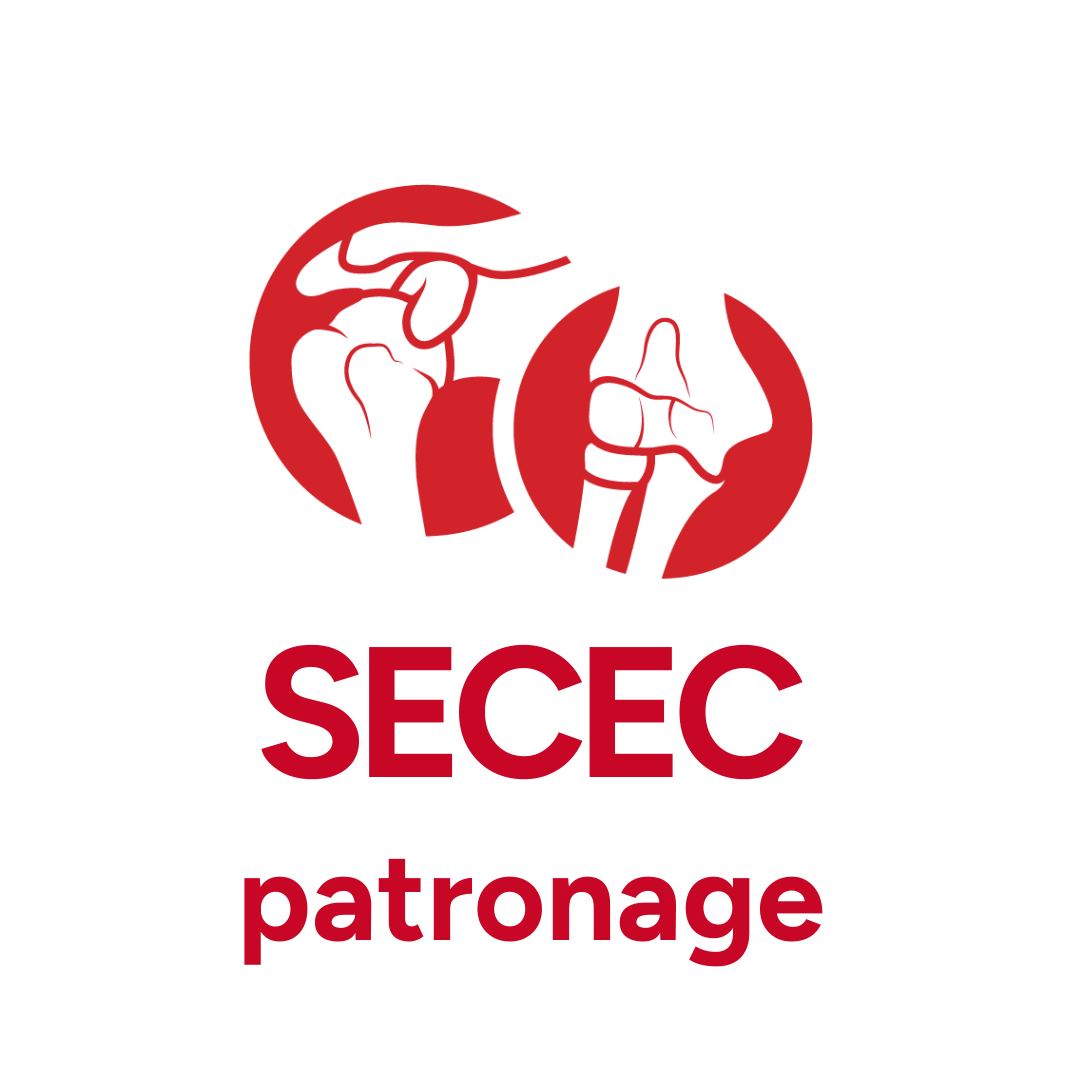Program
Cadaver course on reverse total shoulder arthroplasty
Organized by
Organized by the Orthopedic Department of the Semmelweis University
Supported by
SECEC
Cadaver Lab
4 Stations
Hands on, 3 Trainees per station,
1 Faculty per station
Didactic Goals
To gain advanced skills on reverse total shoulder arthroplasty
Objectives
- learn novel trends in reverse prosthesis design and biomechanics
- get to know the radiological evaluation of patients before and after surgery
- get familiar with the precise indications
- develop surgical skills
- learn tips and trick for exposure and implant position
Operating Room Setup for Shoulder Arthroplasty Procedures
Rehabilitation workshop, MRI workshop, saw bone workshop
Attendees: 24
The attendees will be divided in two groups alternating between didactic session halls and cadaver lab hands-on practical activities.
Organizers
Imre Antal (Semmelweis University, Budapest)
Gábor Skaliczki (Semmelweis University, Budapest)
Imre Sallai (Semmelweis University, Budapest)
Viktor Weninger (Semmelweis University, Budapest)
Eszter Virág-Tulassay (Semmelweis University, Budapest)
Tamás Bárány (Semmelweis University, Budapest)
Faculty
Imre Antal (HU)
Davide Cucchi (DE)
András Fekete (HU)
Balázs Gloviczki (HU)
Károly Gulyás (HU)
Ákos Mátrai (HU)
Andreas Panagopoulos (GR)
Maristella Saccomanno (IT)
Gábor Skaliczki (HU)
| MORNING Saturday, 4 October 2025 |
|||
| Update on the biomechanics and design of reverse shoulder prosthesis (Group 1 and 2 together) | |||
| 08:00-08:20 | Registration | ||
| 08:20-08:30 | Welcome | ||
| 8:30 - 8:40 | Indications for rTSA - where are we in 2025? Davide Cucchi (DE) |
||
| 8:40 - 8:50 | Should reverse shoulder arthroplasty be the first choice for acute proximal humeral fractures in the elderly? Andreas Panagopoulos (GR) |
||
| 8:50 - 9:00 | What’s the story on the humeral side? (lateralizatios, distalization, onlay, inlay) Károly Gulyás (HU) |
||
| 9:00 - 9:10 | Preoperative planning, PSI, AR, Navigation, etc. – Technology around shoulder arthroplasty in 2025 Maristella Saccomanno (IT) |
||
| 9:10 - 9:20 | Technical tips and tricks - how do we get rTSR in the ideal position? Gábor Skaliczki (HU) |
||
| 09:30-13:00 | Group 1. - Wet Lab | Group 2. - Lectures + Workshop | |
| 09:30-09:40 | Design at the glenoid site - how does it affect postoperative outcomes? Ákos Mátrai (HU) |
||
| 09:40-09:50 | How to get a good glenoid exposure Károly Gulyás (HU) |
||
| 09:50-10:00 | Subscapularis managemend in rTSR. Fix it or leave it? Imre Antal (HU) |
||
| 10:00-10:10 | Instability after rTSR – how to avoid it? Balázs Gloviczki (HU) |
||
| 10:10-10:20 | Nerve injuries, acromion fracture – How to prevent, how to treat them? Károly Gulyás (HU) |
||
| 10:20-10:30 | Periprostetic joint infection of the shoulder Imre Sallai (HU) |
||
| 10:30-10:40 | Questions | ||
| 10:40-11:00 | Coffee break | ||
| 11:00 - 13:00 |
Workshops (30 min each)
|
||
| 13:00-14:00 | Lunch break for all groups | ||
| AFTERNOON Saturday, 4 October 2025 |
||
| Group 1 & 2 change places | ||
| 14:00-17:30 | Group 2. - Wet Lab | Group 1. - Lectures + Workshop |
| 14:00-14:10 | Design at the glenoid site - how does it affect postoperative outcomes? Ákos Mátrai (HU) |
|
| 14:10-14:20 | How to get a good glenoid exposure Károly Gulyás (HU) |
|
| 14:20-14:30 | Subscapularis managemend in rTSR. Fix it or leave it? Imre Antal (HU) |
|
| 14:30-14:40 | Instability after rTSR – how to avoid it? Balázs Gloviczki (HU) |
|
| 14:40-14:50 | Nerve injuries, acromion fracture – How to prevent, how to treat them? Károly Gulyás (HU) |
|
| 14:50-15:00 | Periprostetic joint infection of the shoulder Imre Sallai (HU) |
|
| 15:00-15:10 | Questions | |
| 15:10-15:30 | Coffee break | |
| 15:30 - 17:30 |
Workshops (30 min each)
|
|
| 17:30-17:50 | Wrap-up, Closing | |
Commercial names of medical devices/software/equipment may appear in this content because they are linked to specific medical procedures, which are the focus of this training material. Other products in the market can be used to perform the aforementioned medical procedures. The educational provider does not endorse any particular product.

